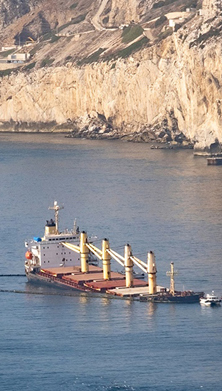Impact of business interruption (incl. supply change disruption) is the major risk for companies for the seventh year in a row according to the Allianz Risk Barometer with 37% of responses ranking it as one of the three most important risks companies face in 2019. Fittingly, it is joined at the top of the rankings for the first time by cyber incidents (e.g. cyber crime, IT failure/outage, data breaches, fines and penalties) (37%)1 which are increasingly resulting in significant business interruption (BI) losses of their own.
“Cyber incidents can cripple a company’s operations and severely impair its ability to deliver its services, yet they are just one of many loss triggers that can result in a BI for corporates,” says Volker Muench, Global Practice Leader, Utilities & Services, IT Communication, AGCS. “BI can be a consequence of many of the other top risks in this year’s Allianz Risk Barometer.”
Irrespective of whether it results from traditional exposures such as a fire at a manufacturing plant or a natural catastrophe which impacts production, a break in the supply chain due to property damages at the premises of a supplier or customer (often known as contingent business interruption [CBI]) or even a riot or civil unrest, BI can have a tremendous effect on a company’s revenues, even if the event occurred thousands of miles away. And its impact can be one of the hardest risks to measure.
Claims analysis from AGCS highlights the growing relevance of BI as a consequence of losses in property insurance, heightened by today’s increasingly interconnected and globalized business environment. Almost all large property insurance claims now include a major BI element, which typically accounts for the majority of the loss when previously the split might have been nearer to 50:50. The average BI property insurance claim now totals over €3mn ($3.4mn) at €3.1mn. This is more than a third (39%) higher than the corresponding average direct property damage loss (€2.2mn)2 with both of these totals now significantly higher than five years ago.
BI threats continue to evolve
Moreover, businesses are facing an increasing number of disruptive BI scenarios as the nature of the risk evolves in today’s networked society. Many of these scenarios can occur without physical damage but with high financial losses. Breakdown of core IT systems, product recall or quality incidents, terrorism and political violence events or riots, environmental or pollution incidents or even regulatory change can bring businesses to a temporary or prolonged standstill and have a devastating effect on revenues.
Product recall and quality incidents pose an increasing BI threat, says Muench. “We see these kind of issues increasing. If one product at the beginning of the supply chain is not the correct one it can affect the whole process and the final product. This frequently happens in the automotive industry, for example.”
Political risk, violence and commotion events are also happening more often than in the past, says Muench, and the indirect impact of such incidents can result in BI and loss of income either from production having to be halted or customers staying away from affected areas. The fall-out from events such as rioting and protesting in France during November and December 2018 can be costly. For example, the French retail federation told Reuters news agency that retailers had lost about €1bn ($1.1bn) since the protests first began on November 173.
BI can also emerge when companies experience environmental issues such as pollution happening at a manufacturing site, on residential real estate or through pipeline spills. This is an often overlooked BI exposure. Expenses and supply chain disruption can quickly grow as a result of lengthy remediation, reconstruction and delays during which firms may be unable to operate or provide products or services.
Meanwhile, in today’s uncertain political and business landscape, changes in regulation and legislation, such as the UK’s expected Brexit departure from the EU, also bring significant BI risk.
“Supply chain disruption could be caused by the closing of borders,” says Muench. “If a manufacturing company needs a part or component from the UK or UK companies need parts or components from different countries this process could take longer than previously.”
For example, there have already been reports that the UK is running out of food warehousing space as retailers and manufacturers rush to stockpile amid fears of a no-deal Brexit4. Frozen and chilled food warehouses are fully booked for six months, with customers being turned away, due to fears the supply chain will be interrupted after the UK’s planned departure from the EU.
Planning for BI
BI risk can be physical, virtual, reputational and always financial – and therefore should be well planned for. Companies can often underestimate the complexity of getting back to business but risks can be mitigated. A sound business continuity plan should be written and tested in a tabletop exercise to be effective. Ideally, the tabletop exercise should be prepared well in advance and designed to test location-specific vulnerabilities.
Insurers such as AGCS support businesses further though provision of new insurance solutions such as cyber BI policies or non-damage BI coverage, which indemnifies a business for lost revenue due to disruption from an event. AGCS also utilizes semantics analysis to better understand supply chain risk. This enables mapping of supplier relationships down to the fourth tier in order to help identify any exposure or accumulation issues.
Which causes pf business interruption do businesses fear the impact of most?

Business interruption and contingent business interruption losses are becoming larger and more complex as supply chains become leaner with greater concentration on a smaller number of suppliers, particularly in industries like automotive, electronics and pharmaceuticals. An event such as a small fire in these industries can bring huge losses.
“Today, a single fire event at a small supplier can cause significant supply chain interruptions in the automotive industry, leading to a shortage of parts, for example,” says Volker Muench, Global Practice Leader, Utilities & Services, IT Communication, AGCS. “We have seen insurance industry losses from such events in excess of €1bn ($1.1bn). With one fire, a plant can go down, manufacturing has to stop and supply chain losses are subsequently generated. Machinery breakdown can have a similar effect.”
SOURCES
1. Business interruption and cyber incidents are tied at the top of the ranking at 37%. However business interruption received more responses by number – 1,078 to 1,052
2. Based on analysis of 1,175 corporate insurance claims which have both a property damage and business interruption loss component
3. BBC News, Yellow vest protests ‘economic catastrophe’ for France, December 9, 2018
4. The Guardian, UK running out of food warehouse space as no deal Brexit fears rise, November 18, 2018















